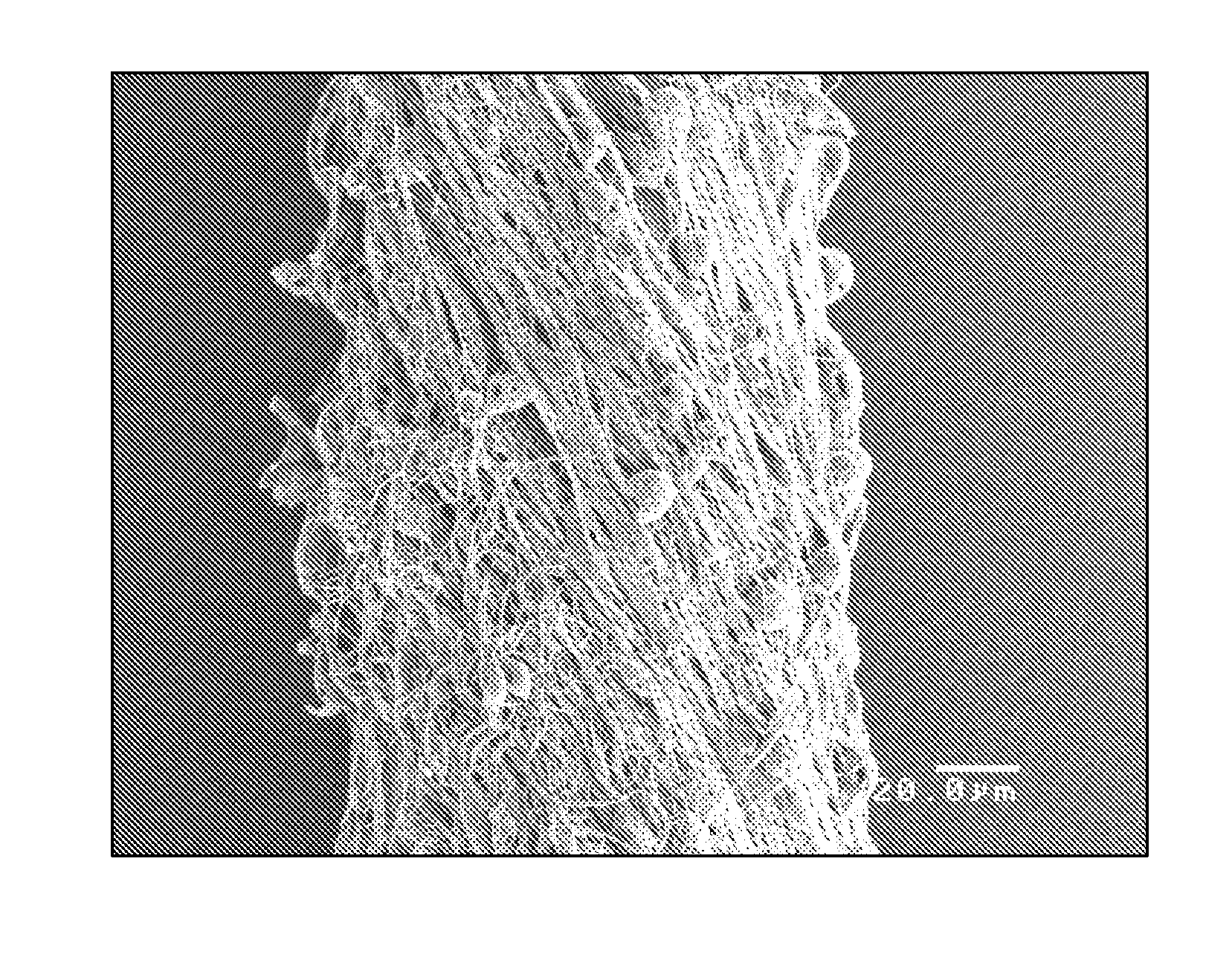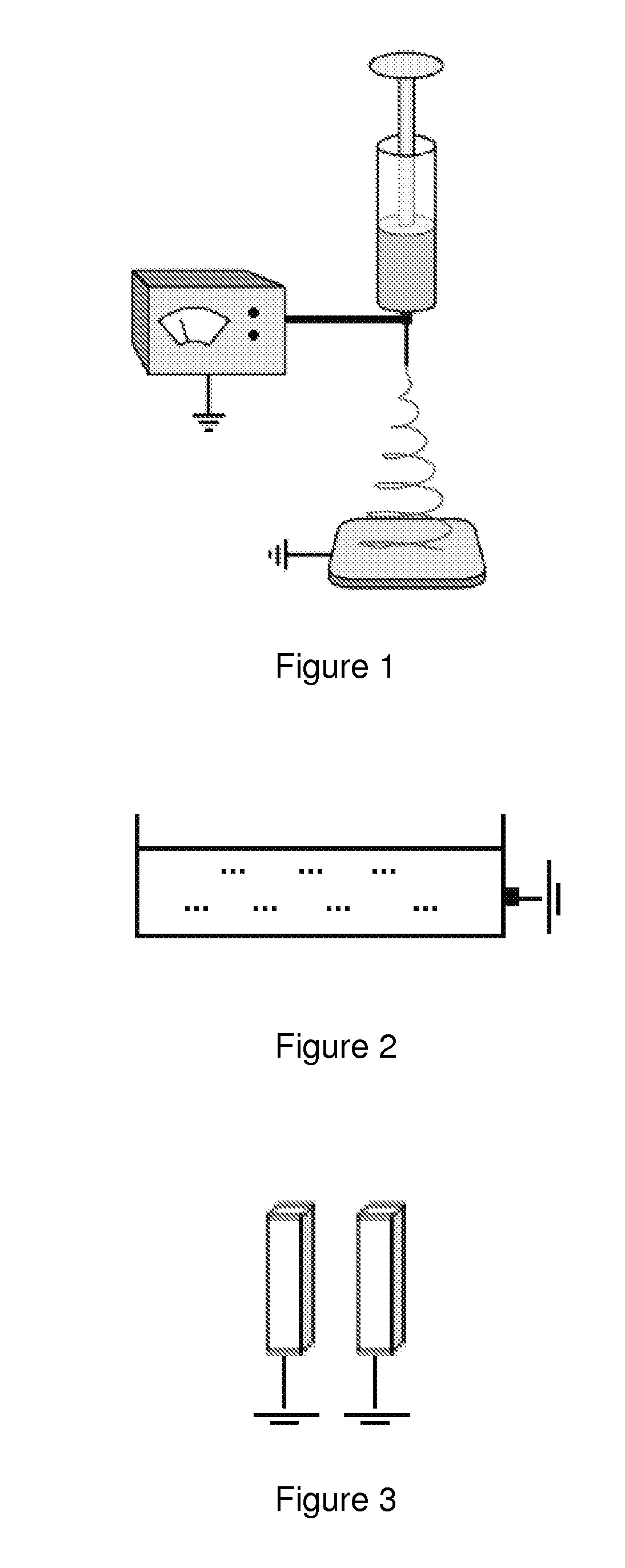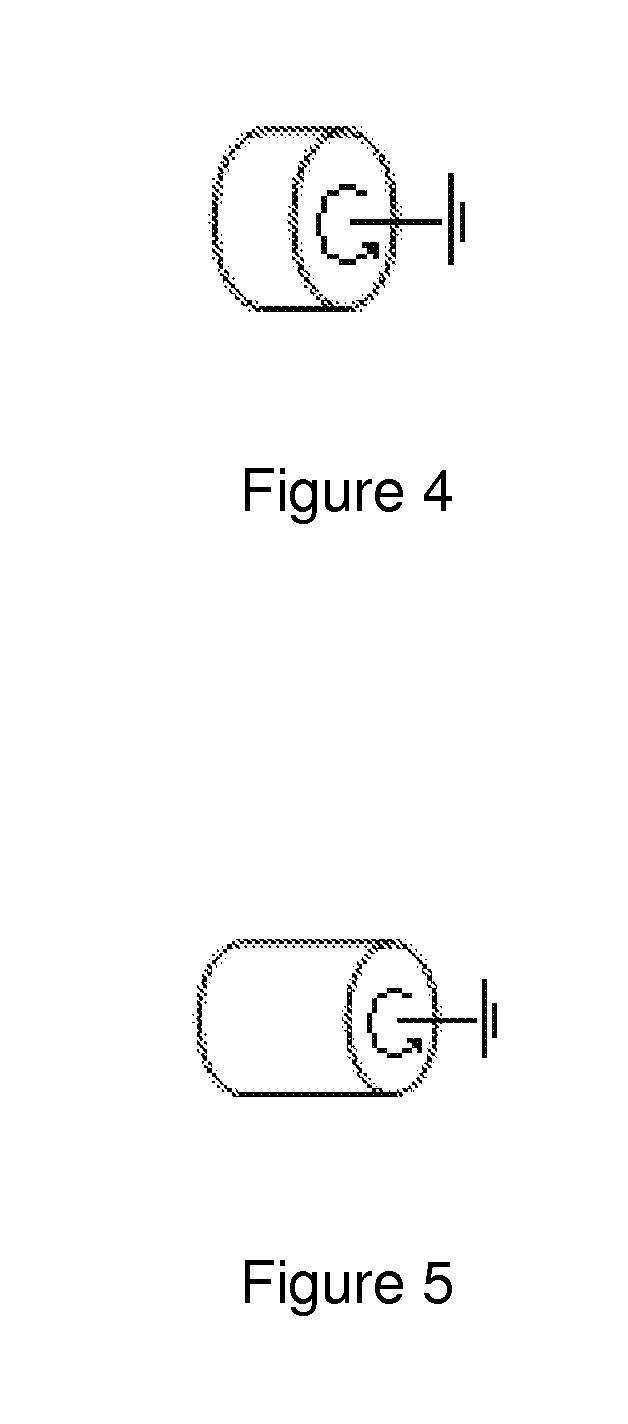Tissue repair scaffold
a tissue repair and scaffold technology, applied in the field of tissue repair scaffolds, can solve the problems of not being able to perform rupture testing, tissue damage, and particularly damage to tendons, and achieve the effect of suitably enhancing the effectiveness of the scaffold, encouraging cell growth, and effective mimicking of the tendon structur
- Summary
- Abstract
- Description
- Claims
- Application Information
AI Technical Summary
Benefits of technology
Problems solved by technology
Method used
Image
Examples
Embodiment Construction
[0144]A number of examples of three-dimensional electrospun bundles of aligned fibres made from PCL are described herein. These fibrous constructs are intended to mimic both the morphological anatomy and the biomechanical properties of natural human tendon. This tissue is known to be composed of a hierarchical organisation of aligned collagen fibres, and these bundles are representative of certain parts of the overall tendon. In embodiments, whilst the fibres contained within the PCL bundles are not of the same size as the collagen fibres, the gross morphology of the fabricated 3D bundles closely resembles those within the natural tendon tissue.
[0145]The fibre bundles described herein are biodegradable and / or bioresorbable. This suitably eliminates the need for secondary surgery. Furthermore, in embodiments, the rate of degradation matches the rate of new tissue formation. Preliminary studies suggest that the degradation rates are suitable for accommodating natural healing times for...
PUM
| Property | Measurement | Unit |
|---|---|---|
| diameter | aaaaa | aaaaa |
| average diameter | aaaaa | aaaaa |
| diameter | aaaaa | aaaaa |
Abstract
Description
Claims
Application Information
 Login to View More
Login to View More - R&D
- Intellectual Property
- Life Sciences
- Materials
- Tech Scout
- Unparalleled Data Quality
- Higher Quality Content
- 60% Fewer Hallucinations
Browse by: Latest US Patents, China's latest patents, Technical Efficacy Thesaurus, Application Domain, Technology Topic, Popular Technical Reports.
© 2025 PatSnap. All rights reserved.Legal|Privacy policy|Modern Slavery Act Transparency Statement|Sitemap|About US| Contact US: help@patsnap.com



